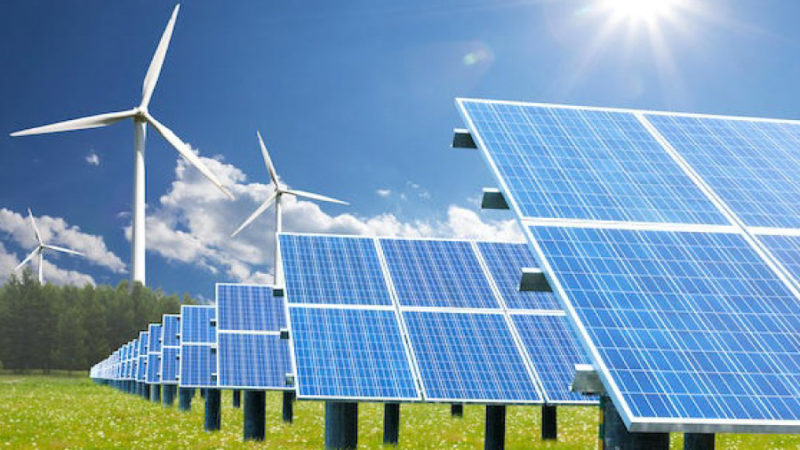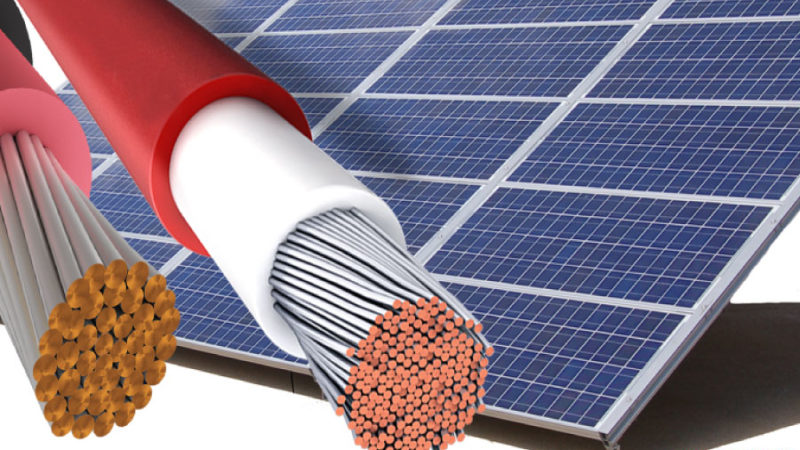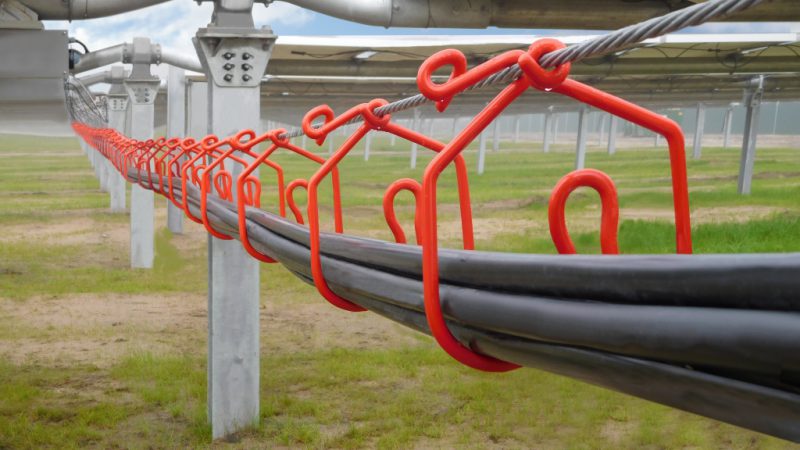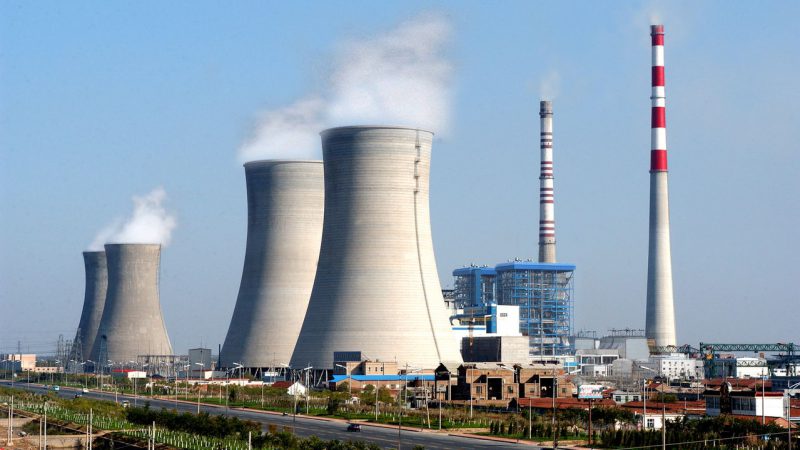Positive Market Trends
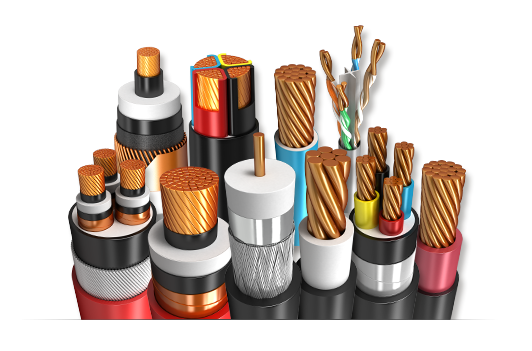
Due to growing emphasis on developing a robust T&D network in the country to meet the rising demand for reliable power, a number of government initiatives and programmes have been undertaken that have helped create a positive market trends for wires and cables.
The growing demand for power, light and communication has kept a high demand for cables and wires, which constitute roughly 40% of India’s electrical industry. Wires and cables play a vital role in every aspect of infrastructural growth and finds extensive usage and applications across a number of industries.
Wire and cables demand is directly dependent on the growth of the manufacturing industry and infrastructure in the power, telecommunications, residential and commercial sectors. Thus the government’s initiatives on various fronts like – power, housing, infrastructure and digitization are sure to generate a lot of business for the wire and cable industry in foreseeable future.
Likewise, with government’s emphasis on pushing renewable energy to the forefront, the industry is now looking forward to supply cables for solar and wind power applications in addition to oil and gas, railways and other specialized segments.
Segment Overview:
Over the past two decades, Indian wires and cables industry has grown considerably in size and is fully established for all types of wires and cables. The Indian electric cable companies have reached maturity in HV cable technology up to 220 kV. Despite greater local expenses and taxes on their goods, they are competitive globally.
Moreover, a global technology platform for EHV wires up to 400 kV was set up by some producers, either through technical cooperation or joint-ventures. Notably, the industry has kept pace by continuously upgrading the technology to meet the technical demand from the Power Sector. However, there is a burning need for standardization of specifications across this segment, which would lead to improved efficiencies in this segment and also reliability of products.
As per various market estimates, there exist more than 25 major power cable companies in the organized sector and over 600 medium & small units across Indian wire and cables industry. Though, the industry has largely been able to transform itself into an organised segment and currently accounts for the major market shares and dominates this industry. Still, the unorganised sector constitutes a notable section of the industry.
Market Growth & Trends
Commenting on the growth and market size, Sanjeev Vyas – Senior General Manager – Havells India, said, “ The Electrical Wire and Cable industry In India has a market size of around 50000 Cr and the market has witnessed a growth rate of around 14-15 % CAGR over the recent years.” Also, as per various industry reports and industry experts, the market is expected to double in size to INR 1,00,000 crore in the next 5 years registering a 15- 16 per cent CAGR.
Vinay Rathi, Executive Director – Gloster Cables said, “Forecast for electric wire and cable in our country is expected to grow at CAGR of approx. 16 per cent during the period from 2016-2020. The year 2017-18 has recorded a growth of approx. 13 per cent. The economy is expected to embark higher growth in FY 2018-19 owing to many proactive measures such as Electricity for all, Smart cities, Railway Electrification, emphasizing on renewable energy segment, the year ahead to take wire and cable market to a new height.”
The growth in the market can be attributed to India’s large population base, increasing industrialization and urbanization, development in transmission and distribution networks, increased renewable energy production and supportive governmental initiatives for expansion or upgrade of existing infrastructure. Experts feel that increasing renewable power generation is one of the primary factors contributing to the growth of electric wire and cables market.
Vinay Rathi added that, “The Indian cable industry with market size of around Rs.16000 crores comprises of around 40% off the entire electrical industry. It is expected to increase by a CAGR of 15% over the next three years to Rs.18000 crores. Cables play a crucial part in all the three aspects of the power sector – generation, transmission and distribution, and as the government pushes for augmentation of transmission and distribution connectivity, it would generate healthy demand.”
Technology & Market Trends
Due to lack of congenial policies and technology for investments in local manufacturing, the country still depends on imports cables of 66 kV and 33 kV. the domestic manufacturers must explore the possibility of manufacturing these items to meet likely demand Global investors are envisaging India as the potential market for high voltage (HV) and extra high voltage (EHV) cables. They use technical cooperation with Indian cabling companies for the manufacturing of EHV wires up to 400 kV to leverage their investments in the Indian cable industry.
Talking on the key market and technology trends Rathi said, “Infrastructural development towards economic growth has taken a key role in almost all segments. Accelerated urbanization and growing concern over pollution have increased investment in metro rails for urban mass transportation. Government has planned to develop metro rails in at least 50 cities across. This besides, mining, power, oil and gas, cement industry and steel plants are seen to be active in form of new expansion or revamping. Different kind of cables like EHV, elastomer cables, solar cables are presently in use other than special application oriented cables and wires including new grade of conductors.”
There is a strong need to standardize specifications across this section, leading to better efficiencies and the reliability and replacement of goods in this sector. With increasing focus on renewables, the industry is now looking forward to supply cables for solar and wind power applications in addition to oil and gas, railways and other specialized segments.
Vyas of Havells echoed the same, “Since technology development is focussed towards renewable energy, the development has greatly been seen in Cables for Solar application. In addition to this, there is significant technological development witnessed in Halogen Free Electrical Wires for building application. Such wires provides Improved Fire performances and offer much reduced risk of Fire hazardous in Electrical Network due to short circuit.”
While commenting on the market trends, Sanjeev Vyas, said that “Among the total market of around INR 50000Cr in India, 65% constitute power and control cables and 35% is for light duty cables. Currently around 65% cables are coming from organized manufacturer and 35% from un–organized manufacturer. After implementation of GST, organized sector share is rapidly in increasing trend and likely to be around 75% up to year -2020.”
Key Market Drivers:
Industry experts, foresees very encouraging growth figures for the Indian wire and cable industry over the coming years. The market growth can be attributed to growing population base, increasing industrialization and urbanization, development in transmission and distribution networks, increased renewable energy production, large automobile production, and supportive governmental initiatives for expansion or upgrade of existing infrastructure.
Power & Renewables: The Indian power sector has an investment potential of INR 15 trillion (USD 225 billion) in the next 4–5 years. Also, the government is planning to achieve targets of tripling per capita power consumption in India which would require an additional 455 GW of installed capacity along with significant investments and operational improvements in T&D networks. Sanjeev Vyas of Havells, said, “The investments undertaken by Govt. in power and infrastructure sectors will drive the demand of wires and cables in the near future as well. Also, projects such as DDUGJY, IPDS, Smart Cities plan and Saubhagya , ‘Power for All’ movement by Central Electricity Authority supported by Focus on renewal Energy is going to be certainly a key driver in India in coming future for Wire and Cable Industry.”
In addition, around 293 national and international entities have committed themselves in India over the next 5–10 years to produce 266 GW of solar, wind, mini-hydro and biomass energy. Investment of around USD 310–350 billion would be part of the initiative. Thus, power sector is all set will play a significant role in demand generation for the segment by providing immense opportunities in power generation, distribution and transmission.
Telecommunication: India is currently the second-largest telecommunication market and has the third highest number of internet users in the world. Internet is the most happening thing in India.
As Microsoft report states, India will emerge as a major virtual global player with 700 million internet users out of the 4.7 billion world consumers by 2025. Moreover, as per media reports, India is expected to have over 180 million smartphones by 2019, contributing around 13.5 per cent to the global smartphone market, based among other factors on increased affordability and improved availability of data services. All this has led to an enormous development of the optical fiber cable (OFC) network, opening an attractive prospect for the Indian cable and wire industry.
Infrastructure: India needs INR 31 trillion (USD 454.83 billion) to be spent on infrastructure development over the next five years, with 70 per cent of funds needed for power, Roads, Railways and Urban infrastructure segments.
The Govt. plans to spend INR 850,000 crore in the next five years to modernize Indian Railways. The Cabinet cleared the INR 82,000 crore (USD 12.3 billion) dedicated freight corridor for decongesting existing network. Further, rapid urbanization, is boosting demand for wires and cables in the residential & commercial buildings and power distribution sectors.
Automotive: The Indian automotive sector is one of the world’s biggest. Around 7.1% of the gross domestic product (GDP) in the country is in the sector. India is also a major car exporter and has powerful expectations of export growth in the near future. The rising demand for low-voltage wires in electrical installations of automobiles is another factor adding to the growth of the market.
Vinay Rathi of Gloster Cables said, “Our Country, being at the threshold of major reforms, is expected to rank the world’s top three growing economies and among the top three manufacturing destination within next 2/3 years. 3-D concept as designed by our Union Govt Democracy, Demography and Demand is seen moving in its right phase towards implementation.”
Adding further he said, “Supporting engineering through Skill India (multi skill development program), Digitalisation on B2B, B2C, multiple manufacturing incentives, extra social security measures to reduce poverty, focusing on infrastructure, and more incentive on agriculture seemingly to be the key elements towards growth achievement. With government focus on Electricity for all under Sobhagya scheme, and smart city initiative, we expect huge demand in coming years.”
Key Challenges
The Indian cable & wire industry is witnessing rapid growth and major players have been expanding their operations rapidly to meet the growing demand. However, they face persistent problem related to counterfeit products in the market that creates a number of negative business implications.
On the other hand, the low quality cheap products from the unorganised segment plague the market. There is a burning need for standardisation of specifications across this segment, which would lead to improved efficiencies in this segment and also reliability of products.
Meanwhile, the volatility in price of raw material also adversely affect the profit margins of the players. Copper prices have also become a major issue, because they have squeezed the profit margins, and in the international market copper has become incompetent. There are also lack of government efforts to amend the rules and regulations related to wire manufacturing.
Vyas comments, “Raw material price volatility is one of the industry’s main issues. Any upward movements in the prices of raw material like steel, zinc, copper, and aluminium have an adverse effect on the profit margins. In addition to this, another challenge is to convince customer to pay for Quality. Due to lack of standardisation of the end product, there is serious challenge for the sector. Since Wire and Cable product is mainly Raw Material driven, unorganized manufacturer with substandard quality parameters also survives because of easy going functional performance with compromised quality parameters.”
“Also, delay in execution of projects due to the requirement of multiple clearances and approvals, poses a major impediment to the growth of the industry, he added.”
On the other hand, one of the biggest challenges for the industry is operation and service, including reduced lifetime of cables due to mishandling and deployment times. Increasing price and competition from Chinese imports also poses challenges for the industry.
Vinay Rathi of Gloster Cables, is of view that – In spite of growth prospect as planned, high inflation and persistent trade deficit, slow electrical price index, low productivity and weak human capital etc are key hindrances. Firms rated low domestic demand followed by high commodity prices is main concern in CII’s Business outlook survey.
“Similarly, uneven business competition regardless to quality is another aspect deserves attention at all levels. Various social developmental scheme as announced by union government, reformation in banking sector, upbringing of skill working knowledge through various engineering colleges, foreign direct investment would help for implementation of growth programme as envisaged”, he added.
Conclusion
The government’s initiatives on the front of power, housing, infrastructure and digitization are sure to pay dividends to all the industries. Housing for all, power for all and internet for all means a lot of business for the wire and cable industry in the coming future. Not only the above mentioned industries, the emphasis the government is putting on non- conventional sources of energy like solar is also a positive step for the wire and cable industry.
Sanjeev Vyas says, “Increasing demand for power, light and communication will keep demand high for wire and cable. Also, the increase in the demand of reliable & efficient energy transmission & distribution systems will drive the growth of wires & cables market in near future. The wire and cable industry will eventually focus on supplying cables for specific application pertaining to the industry needs. The Government’s impetus on infrastructure sectors such as power, railways, roads and petrochemicals will in turn spur demand for more power, and hence more power cables. Growing market potential, increased adaption of new technologies by the utilities, growing importance of services that may be linked to digital technologies have generated further scope for the growth of wires and cables industry in India. In addition, introduction of Goods and Service Tax (GST) has brought unorganised players in the sector under the tax net which has helped narrowing the price difference between organised and unorganised market.”
Vinay Rathi feels that, since government has identified power sector as a key sector of focus so as to promote sustained industrial growth. Initiative by the government to boost country’s power sector will lead to increase in demand electrical industries. The second half (Q3 & Q4) of 2018-19 has shown a steady growth as compared to the first half and the next FY is expected to reach still high land mark.


